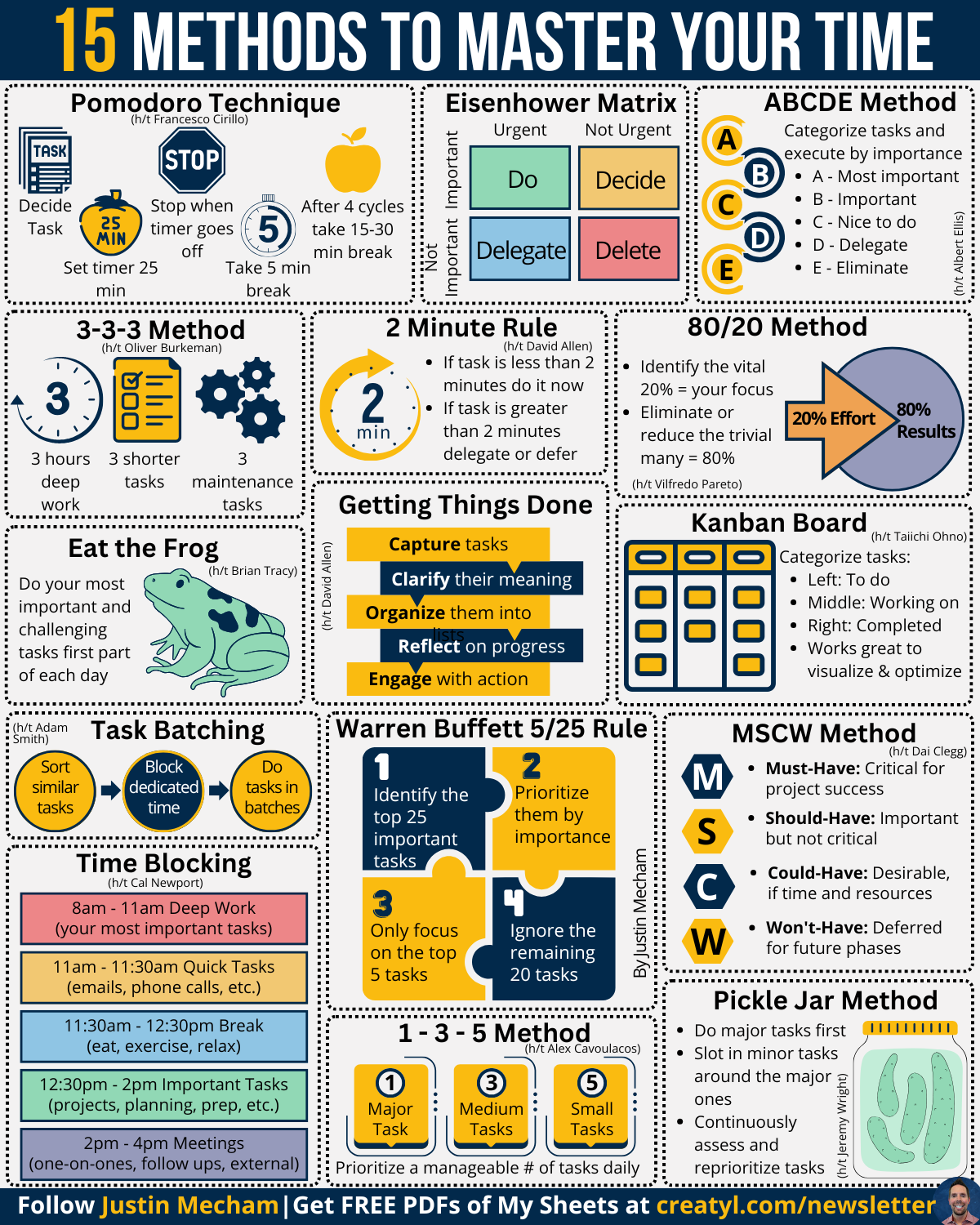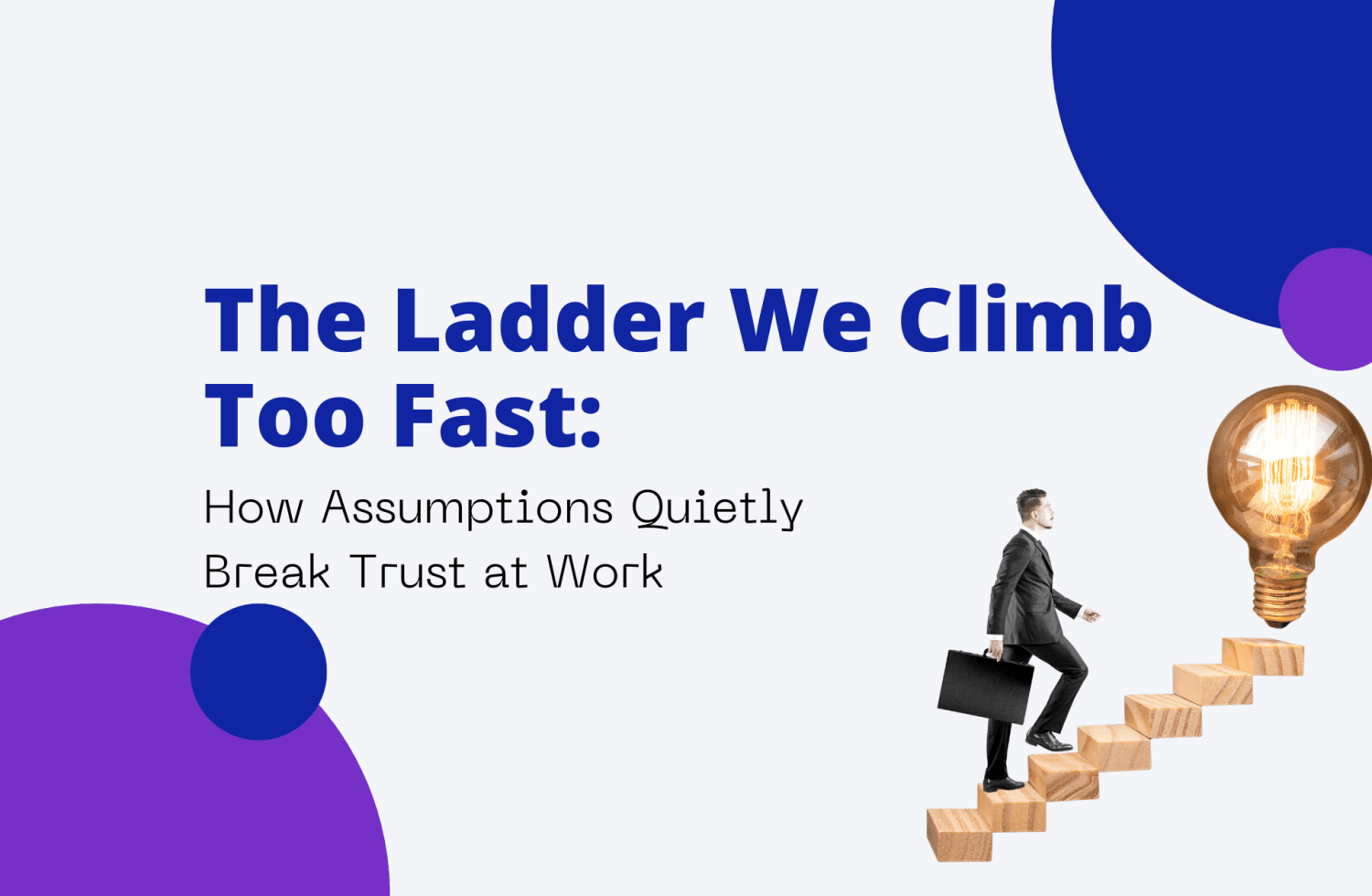Click Here to Download The PDF
You don’t have a time problem.
You have a decision problem.
That’s the truth most of us don’t want to hear—because it’s easier to blame the clock than admit we’re saying yes to the wrong things.
Every day gives you 1,440 minutes.
What matters is how many of those minutes go toward what you actually care about.
That’s where time mastery begins.
Not with more hours.
But with better systems—and fewer unmade decisions.
The 15 time methods in this post aren’t just productivity hacks.
They’re decision tools.
And once you start using them, you stop reacting to your day and start designing it.
Let’s walk through what that really looks like in action.
Why Most People Are Busy but Not in Control
Busy doesn’t always mean productive.
Sometimes it just means we’re avoiding the harder decisions.
We tell ourselves we’ll get to that “one thing” tomorrow.
We answer every message immediately.
We say yes out of guilt, distraction, or habit.
Meanwhile, the work that matters most—the goals that would move our lives forward—sits untouched.
That’s not a time issue.
It’s a clarity issue.
And without a system, you’ll always default to the easy stuff.
The low-effort tasks.
The quick wins that feel productive, but change nothing.
That’s why time management isn’t really about managing time.
It’s about managing what you say yes to.
What Time Mastery Really Means
True time mastery isn’t rigid.
It’s not about filling every hour with back-to-back meetings or blocking your calendar down to the minute.
It’s about getting clear on what matters—and letting that clarity drive every choice you make.
The best systems aren’t complicated.
They’re repeatable.
They help you sort signal from noise so you can spend more time where it counts.
That’s where these 15 methods come in.
Each one gives you a lens.
A decision framework.
A way to stop losing time in reaction mode—and start building the day on purpose.
And you don’t need all 15.
You just need a few that match how you work best.
Real Workplace Example
Here’s how I helped a burned-out founder go from reaction to clarity—using just three of these methods.
A startup founder I worked with felt like they were constantly putting out fires.
They started every day with a plan—but by noon, that plan was gone.
Emails, Slack, investor messages, urgent issues, internal decisions—it all came at once.
By 6 p.m., they had checked off dozens of minor tasks.
But the things that mattered? The product roadmap? The pitch deck? Strategy work? Still untouched.
They kept saying: “I just don’t have time.”
But the truth was harder to admit:
They were making hundreds of tiny, unfiltered decisions—and losing hours to the wrong ones.
They were exhausted, reactive, and frustrated with their team.
They felt like they were working constantly but weren’t making progress.
They couldn’t tell the difference between what was urgent and what was important—so everything became a priority.
And under the surface, they felt like they were failing at the one thing that mattered most: building the future of their company.
We didn’t start by adding more tools.
We started by taking away confusion.
Here’s what we did:
- Used the Eisenhower Matrix every morning to sort their task list into Do, Decide, Delegate, and Delete.
- This helped them stop reacting and start choosing—before the day even began.
- Implemented Time Blocking.
- We protected the first 2 hours of the day for deep, creative work.
- No Slack. No email. Just strategy.
- Applied the Warren Buffett 5/25 Rule to long-term priorities.
- We listed 25 ideas competing for attention—and picked only 5 to focus on for the next quarter.
- Everything else? Parked intentionally, not endlessly circled.
Within two weeks, the shift was visible.
They had space to think again.
Their calendar matched their actual goals.
And best of all, they started ending their days with a sense of completion, not chaos.
The 4-Step Reset: How to Master Your Minutes (Without Burning Out)
You don’t need to overhaul your entire calendar.
But you do need to change your relationship with your time.
Here’s how to start.
1. Define “Important” for Yourself
Most time gets wasted because we never stop to ask:
What actually matters?
Pick your top 3 priorities this week.
Not the urgent ones. The meaningful ones.
Write them down.
Refer back to them every time you sit down to work.
2. Choose a System That Matches Your Mind
Some people thrive on visual tools like a Kanban Board.
Others need structure like Time Blocking, or rhythm like the Pomodoro Technique.
The best system is the one you’ll use.
Experiment until one clicks.
3. Make Time Harder to Give Away
Don’t let your calendar become public property.
Your attention is finite—protect it.
Start saying:
“I’m heads-down until 2. Can we connect after that?”
Or: “I’ll take a look once I finish this block I’ve scheduled.”
The more you value your minutes, the more others will too.
4. Schedule Thinking, Not Just Doing
Tasks get done in sprints.
But good decisions? They need space.
Block 30 minutes each week just to think, plan, and adjust.
That’s not wasted time—it’s the foundation of everything else.
Curated Tools to Go Deeper
If you’re serious about taking control of your time, here are some of the best resources out there right now—practical, powerful, and wildly effective.
Book
Deep Work by Cal Newport
This book breaks down why focus is rare—and how to create an environment and habit system where you can finally do the work that matters.
TED Talk
Inside the Mind of a Master Procrastinator by Tim Urban
Funny, relatable, and revealing—this talk helps you understand why time slips away and how to start managing your inner “instant gratification monkey.”
Podcast
The Focused Podcast with David Sparks and Mike Schmitz
A thoughtful series on intentional work, productivity systems, and how to regain control of your calendar without turning into a robot.
Tool
Motion
An AI-powered productivity app that merges time blocking, scheduling, and task management into one platform—great for people who want smart structure without constant context switching.
Clarity Builds Confidence
The Strongest Calendar Is Built on Purpose, Not Pressure
You can’t control the clock.
But you can control what you say yes to.
When you stop treating time as something that happens to you—and start seeing it as something you get to design—everything changes.
You move from busy to focused.
From scattered to clear.
From reactive to confident.
These 15 time methods aren’t about working more.
They’re about making better decisions, more often, with less regret.
The truth is: most people lose their day in 5-minute chunks.
But when you add clarity back into the equation, you win it back—one decision at a time.
This isn’t about squeezing every ounce of productivity out of your day.
It’s about finally giving your best time to the things that matter most.
And when that becomes your standard?
You stop surviving your days—
and start building a life that actually feels like yours.
Download the Infographic
Want a visual reminder of these 15 powerful methods?
Download the full infographic as a printable, shareable PDF.
Perfect to keep on your desk, in your planner, or with your team.
Click here to download the 15 Methods to Master Your Time PDF
Use it to design better days—starting now.
-
Justin




